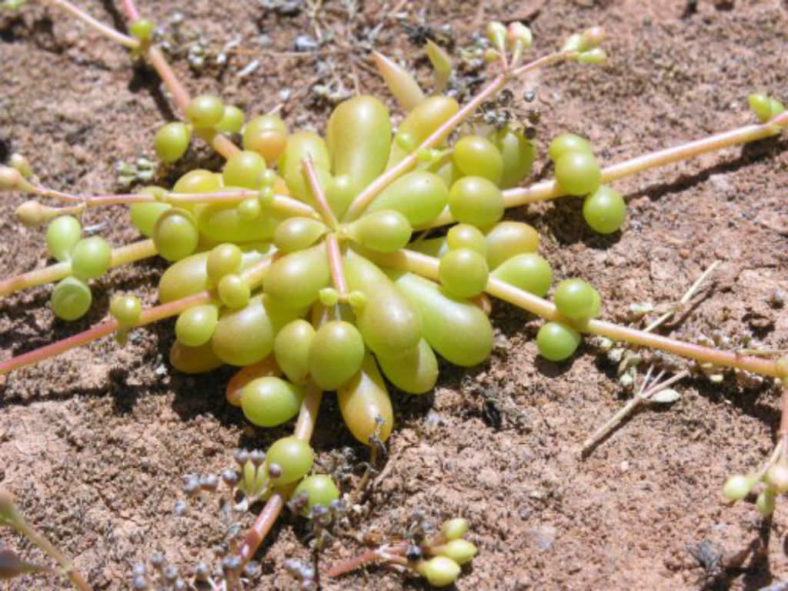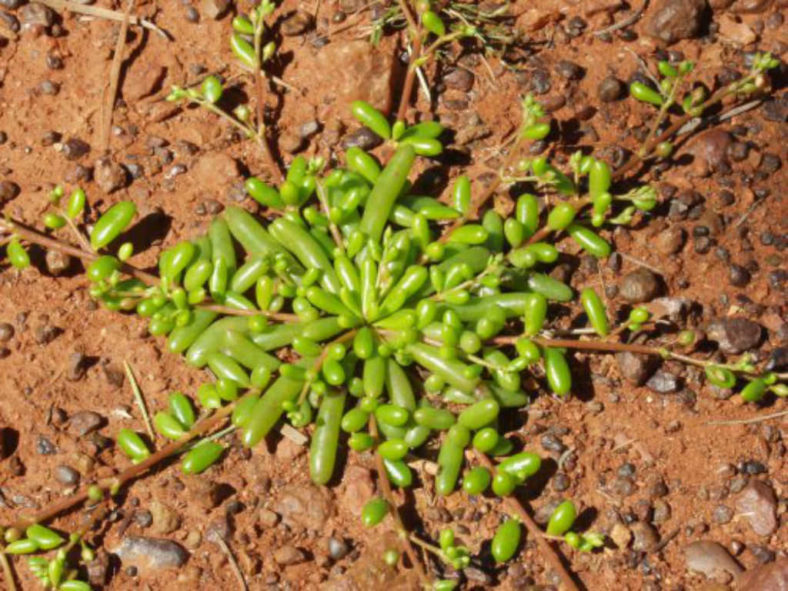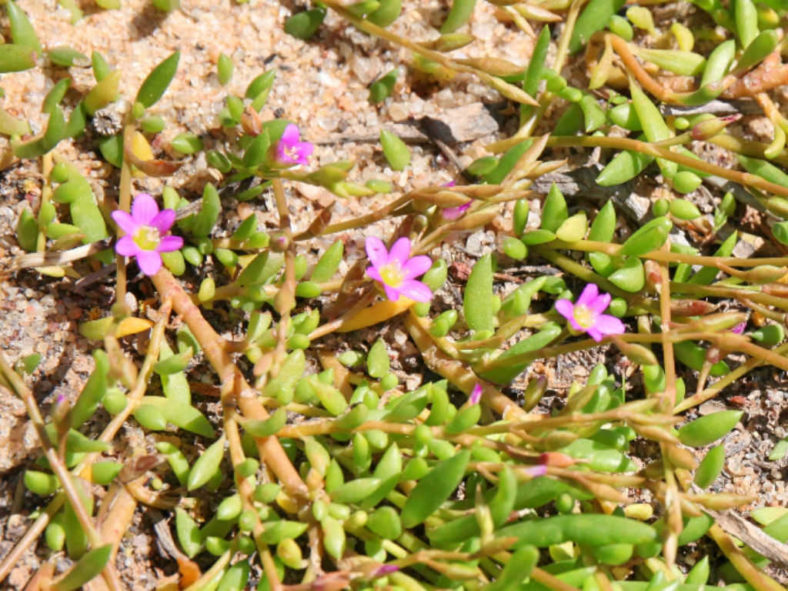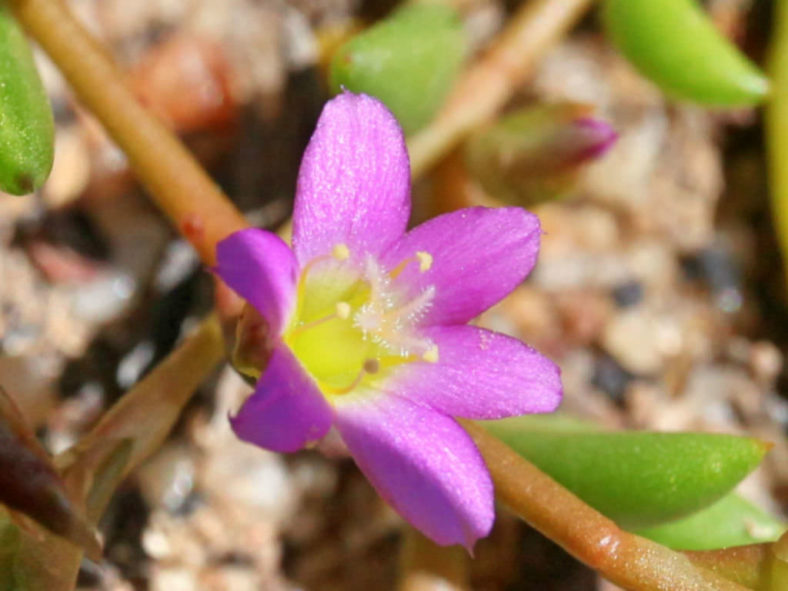Scientific Name
Calandrinia creethiae Tratman ex Morrison
Synonym(s)
Parakeelya creethiae, Rumicastrum creethiae
Scientific Classification
Family: Montiaceae
Genus: Calandrinia
Etymology
The specific epithet "creethiae" (pronounced "cree-ETH-ee‑ah") honors Miss Creeth, who first collected this species at Laverton, about 480 miles east of the coast at Champion Bay. This epithet is often spelled as"creethae."
Origin
Calandrinia creethiae is native to central Western Australia. It occurs in sandy soils in dry areas in Murchison.
Description
Calandrinia creethiae, also known as Rumicastrum creethiae or Parakeelya creethiae, is a low-growing annual plant with prostrate stems and fleshy, elongated, often balloon-shaped leaves. It can grow up to 2 inches (5 cm) tall. The leaves vary in color from bright green to yellow and pink and can measure up to 2.4 inches (6 cm) long.
The flowers appear in clusters of 10 or more on long, branched stalks, usually in spring. They are white or mauve, 6-petaled, with long stamens, and can reach a diameter of 0.5 inches (1.2 cm).

How to Grow and Care for Calandrinia creethiae
Calandrinias are very easy to care for as they can tolerate prolonged dry periods. They do not like too much water, especially in the winter. Plants can grow as short-lived perennials in warm regions, but should be grown as annuals elsewhere. Propagate by taking cuttings or allowing plants to self-seed in situ.
If you plan to grow outdoors from seed, Calandrinia species should be sown at a depth of 0.1 inches (0.3 cm) after the last frost of spring. If you prefer to start Calandrinias from seed indoors, they should be started about eight weeks before they are set out. At temperatures between 55°F and 60°F (13°C and 16 °C), the seeds germinate in 1 to 2 weeks. The seedlings of Calandrinia should be planted out at a spacing of about 8 inches (20 cm) after the last possible spring frost, in an area that receives plenty of sunlight and in gritty or sandy soil.
See more at How to Grow and Care for Calandrinia.
Links
- Back to genus Calandrinia
- Succupedia: Browse succulents by Scientific Name, Common Name, Genus, Family, USDA Hardiness Zone, Origin, or cacti by Genus
Photo Gallery
Click on a photo to see a larger version.


